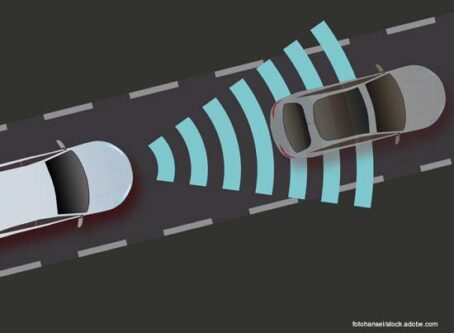Opponents to AEB mandate point to false activation reports
Supporters of a proposal to require automatic emergency braking systems on newly manufactured heavy vehicles point to estimates that a mandate would prevent 19,118 crashes and 155 deaths each year.
However, opponents to an automatic emergency braking system mandate note reports of false activations and caution that no requirement should be forced upon truckers until the technology is perfected.
“There are two potential unintended consequences that cannot be quantified: the impact of false activations on safety and the potential impact of sensor degradation over time on AEB performance,” the Federal Motor Carrier Safety Administration and National Highway Traffic Safety Administration wrote in a notice of proposed rulemaking that is expected to be published in the Federal Register in the coming days.
FMCSA and NHTSA announced the forthcoming proposal during a news conference on June 22. The proposal would require automatic emergency braking systems and electronic stability control systems on new vehicles that weigh more than 10,000 pounds.
“Establishing AEB standards is a key component of the Department’s National Roadway Safety Strategy,” FMCSA Administrator Robin Hutcheson said in a news release. “This technology can enhance the effectiveness of commercial motor vehicle crash reduction strategies and reduce roadway fatalities.”
NHTSA investigation
The announcement, however, comes only weeks after NHTSA announced that it launched an investigation about false automatic braking on certain Freightliner and Western Star trucks.
On May 26, NHTSA opened an investigation on 2017-22 Freightliner Cascadia and 2017-22 Western Star 5700 trucks. Approximately 250,000 trucks may be affected by the investigation.
According to NHTSA documents, the automatic emergency braking system may have a defect. Specifically, the truck system may inaccurately identify an object and command the vehicle to stop unexpectedly, resulting in a hazard to other motorists.
There were 18 complaints of false automatic emergency braking activation “without an actual roadway obstacle.” In some instances, the false activation brought the truck to a complete stop in the travel lane. NHTSA did not report any crashes caused by the false braking.
The investigation aims to determine if the alleged defect creates an unreasonable safety risk.
The AEB proposal
Despite the investigation of false braking, NHTSA and FMCSA still plan to move forward with the proposal.
“The agency is aware that some current AEB systems may occasionally cause unwarranted braking events or false activations, which could lead to unintended consequences,” FMCSA and NHTSA wrote in the notice. “We are thus proposing two test scenarios which vehicles must pass without false activation of the AEB system.”
The agencies acknowledge in the notice, however, that the proposed false activation tests “establish only a baseline for system functionality” and that they “are not comprehensive, nor sufficient to eliminate susceptibility to false activations in the myriad of circumstances in the real world.”
OOIDA, which opposes an automatic emergency braking system mandate, says that the agencies must resolve any performance issues before attempting to move forward.
“NHTSA is currently investigating 250,000 heavy-duty trucks equipped with AEB that may inaccurately identify objects and cause unexpected stops,” said Jay Grimes, OOIDA’s director of federal affairs. “Drivers will also need more assurances that AEB technology will work in all types of road and weather conditions.”
If the proposal eventually becomes a final rule, all Class 7 and 8 vehicles – those weighing more than 26,000 pounds – would be required to meet the automatic emergency braking standards three years after the rule takes effect. All Class 3-6 vehicles – those weighing 10,001-26,000 pounds – would be required to meet the automatic emergency braking and electronic stability control requirements in four years. Small-volume manufacturers would have until five years after the final rule took effect. The proposal would not require existing heavy vehicles to be retrofitted with automatic emergency vehicle technology.
Once the notice of proposed rulemaking is published in the Federal Register, the public will have 60 days to comment. LL
Land Line’s Tyson Fisher contributed to this report.









